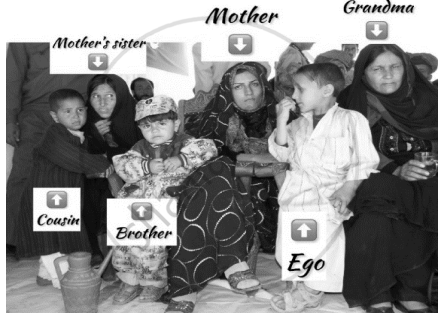Advertisements
Advertisements
प्रश्न
Make a comparative study of Joking relationships and Avoidance relationships in Kinship usages.
उत्तर
Kinship is one of the main organizing principles of society. It is one of the basic social institutions found in every society. This institution establishes relationships between individuals and groups. People in all societies are bound together by various kinds of bonds.The most basic bonds are those based on marriage and reproduction. Kinship refers to
these bonds, and all other relationships resulting from them. Thus, the institution of kinship refers to a set of relationships and relatives formed thereof, based on blood relationships (consanguineal), or marriage (affinal).
According to Robin fox: “Kinship is simply the relations between the ‘kin’ that is persons related by real, putative or factitive consanguinity”.
Avoidance:
In all societies the usage of avoidance is observed in one form or another. It means that the two kins should remain away from each other. In other words, they should avoid each other. They should not only avoid sexual relationship but in some cases avoid seeing the face of each other. Thus, a father-in-law should avoid daughter-in-law. The custom of putting on the
veil in front of elders in Hindu family illustrates the usage of avoidance.
Different explanations have been given for the usage of avoidance. Two of them are functionalist explanations given by Redcliff Brown and G. P. Murdock. According to them, avoidance serves to forestall further and more
serious trouble between relatives. The third is the Freudian explanation according to which avoidances represent a sort of institutionalized neurotic
symptom.
Joking relationship:
It is the reverse of avoidance relationships. Under it, two person in a relation is permitted to tease or make fun of the other. Such relationship prevails between a woman and her husband’s brother, between a man and his wife’s sister, etc.
“A joking relationship involves a particular combination of friendliness and antagonism between individuals and groups in certain social situations.
In these situations one individual or group is allowed to mimic or ridicule the other without offence being taken”. Duncan Mitchell.
APPEARS IN
संबंधित प्रश्न
Answer briefly the following question :
What are the two types of unilineal descents?
Define degrees of kinship. Discuss its types with examples.
Answer briefly the following questions :
Explain the term Consanguineous Family.
Define degrees of kinship.
Give the meaning of the term kinship usage.
Explain the three degrees of kinship giving one example of each.
When two kins, generally of opposite sex, behave in a formal way and maintain physical distance from each other, it is called ______.
In some communities in India, descent is traced through the female ancestor. The pattern of descent referred to here is ______.
Assertion: In some communities, a son-in-law can be very friendly with his father-in-law and can ask for anything in his in-laws’ house.
Reason: A Joking Relation exists among some kin members to ease the strain that may arise in their relationship.
Identify the examples of the three degrees of kinship from the image shown below. Discuss each of the three degrees briefly.

